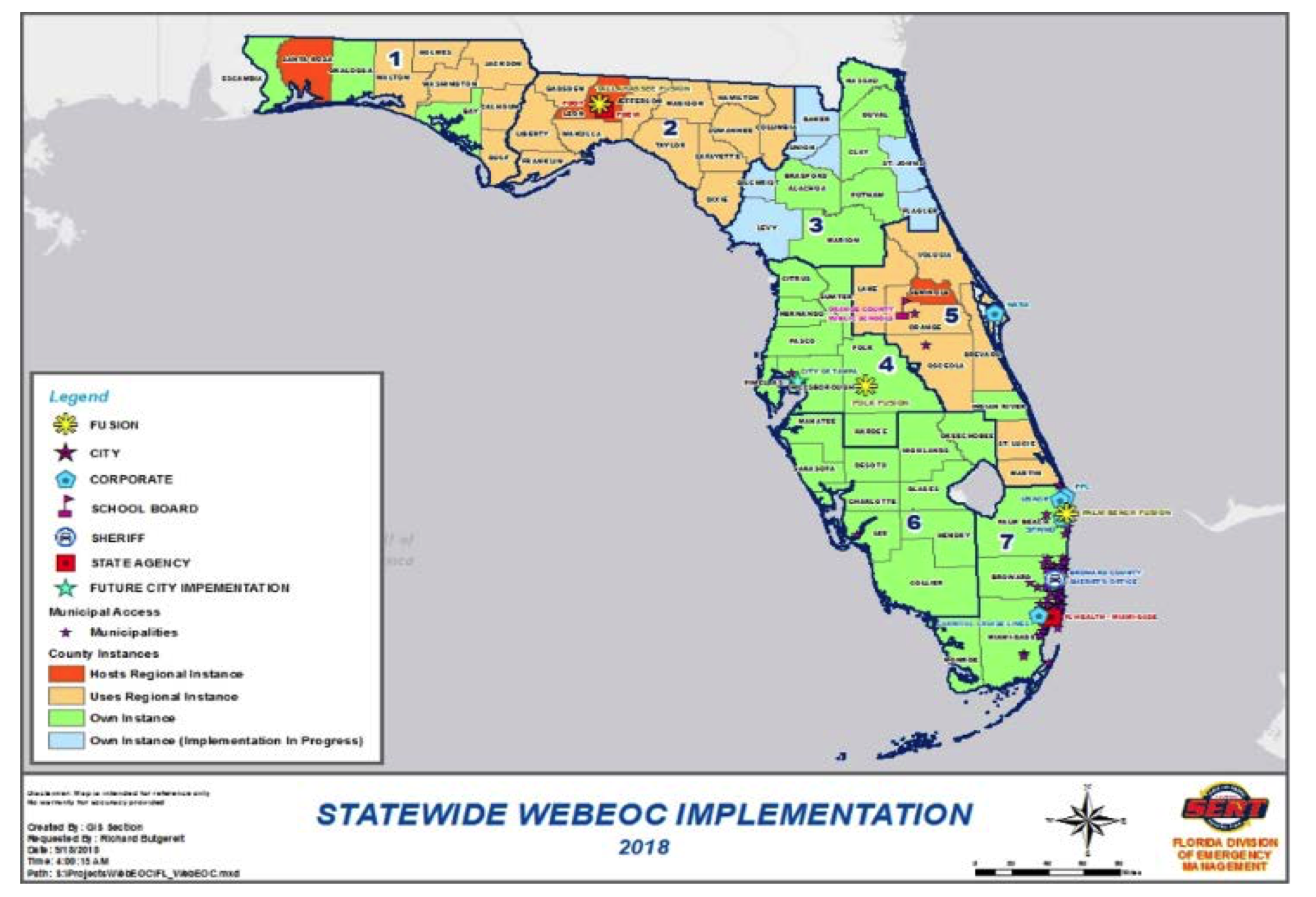SUMMARY
The Florida Department of Emergency Management (FDEM) used preparedness grant funds (EMPG) to expand its WebEOC crisis management system, a shared statewide communication software platform that can implement standard emergency management processes to maintain a common operating picture during large-scale events. Counties and local jurisdictions in Florida used various funding methods to fund WebEOC (SHSP, UASI, EMPG, EMPA and state and local funds). FDEM tested WebEOC integration during the 2018 hurricane exercise (HURREX), which was based on a Hurricane Irma-type scenario. Exercise participants used WebEOC to create and update missions, train new employees, and test the execution of emergency operations procedures consistent with the hurricane scenario.

WebEOC is an emergency management and homeland security communication platform that is highly flexible and can be customized with dashboards, task tracking, and maps to meet the needs of emergency management and homeland security officials. Florida previously used
E-Team and EM Constellation communications systems from 2005 until 2017 when the state began the transition to WebEOC.
In Fiscal Year (FY) 2016 and FY 2017, Florida Division of Emergency Management (FDEM) used a total of $1,271,777 of Emergency Management Performance Grant (EMPG) funding to extend its WebEOC mission management software platform. Individual counties used various funding strategies to fund WebEOC implementation in their respective jurisdictions, using a combination of state and local funds, Florida Emergency Management and Preparedness Assistance (EMPA), EMPG, Urban Area Security Initiative (UASI), and State Homeland Security Program (SHSP) funding. For instance, the Miami–Fort Lauderdale UASI used $145,000 in UASI funding annually from 2011 to 2017 to support the WebEOC system in Broward, Miami–Dade, Monroe, and Palm Beach counties. Florida met the goal of connecting all local WebEOC systems to FDEM’s WebEOC system using the Florida FUSION system by April 2018, including WebEOC customization for the Florida State Emergency Response Team (SERT). It also created and implemented statewide processes to maintain a common operational picture, including adding Essential Elements of Information, Information Message, Road Closures, Damage Assessment, and Shelters to WebEOC, completed in May 2018.
Florida conducts an annual statewide exercise based on previous hurricane after-action findings, during which stakeholders practice continuity of operations and communications. FDEM tested the new WebEOC integration during the 2018 hurricane exercise (HURREX), which was based on impacts from a Hurricane Irma scenario. Exercise participants used WebEOC to create and update missions, train new employees, and test the execution of emergency operations procedures consistent with the hurricane scenario. Participants also created a new dashboard on the WebEOC mission management system with all mass care feeding locations and their site status. The Emergency Support Function (ESF)-8 players in the exercise encountered only minor issues when using the new system during the HURREX. All system or user errors were addressed with the FDEM during the exercise and were either corrected immediately or added to the After-Action Review Board for FDEM to work through post-exercise.
WebEOC was used during a wildfire and at a number of recent special events, including the Blue Angels Homecoming Show, the Governor’s Inauguration, Sun & Fun, the Daytona 500, football games, and music festivals. Several other programs throughout Florida used WebEOC for various purposes, including coordination for Community Emergency Response Teams (CERT), healthcare facilities, training and exercises, and for local mitigation strategies. Florida plans to continue investing in WebEOC capabilities to develop a notifications function, Geographic Information System (GIS) and mapping, and for additional guidance and training capabilities. Florida will continue to use grant funding for enhancements and sustainment of WebEOC.
REFERENCES
FEMA, National Preparedness Assessment Division. Stakeholder Interviews with representatives from Florida. August and September 2018.

